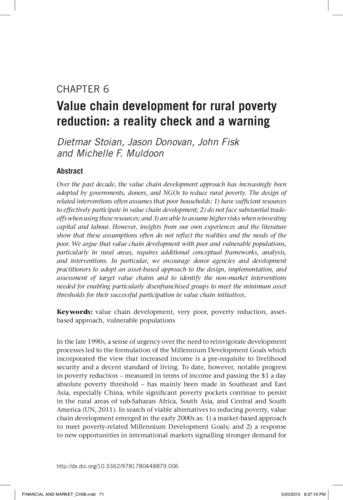Value chain development for rural poverty reduction: a reality check and a warning
Over the past decade, the value chain development approach has increasingly been adopted by governments, donors, and NGOs to reduce rural poverty. The design of related interventions often assumes that poor households: 1) have sufficient resources to effectively participate in value chain development; 2) do not face substantial tradeoffs when using these resources; and 3) are able to assume higher risks when reinvesting capital and labour. However, insights from our own experiences and the literature show that these assumptions often do not reflect the realities and the needs of the poor. We argue that value chain development with poor and vulnerable populations, particularly in rural areas, requires additional conceptual frameworks, analysis, and interventions. In particular, we encourage donor agencies and development practitioners to adopt an asset-based approach to the design, implementation, and assessment of target value chains and to identify the non-market interventions needed for enabling particularly disenfranchised groups to meet the minimum asset thresholds for their successful participation in value chain initiatives.

